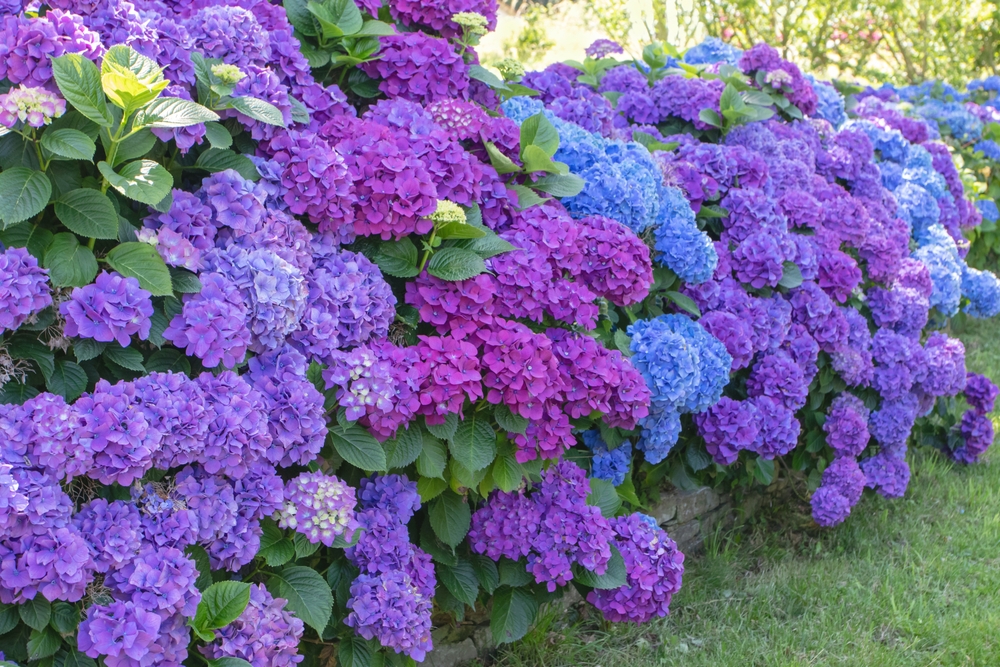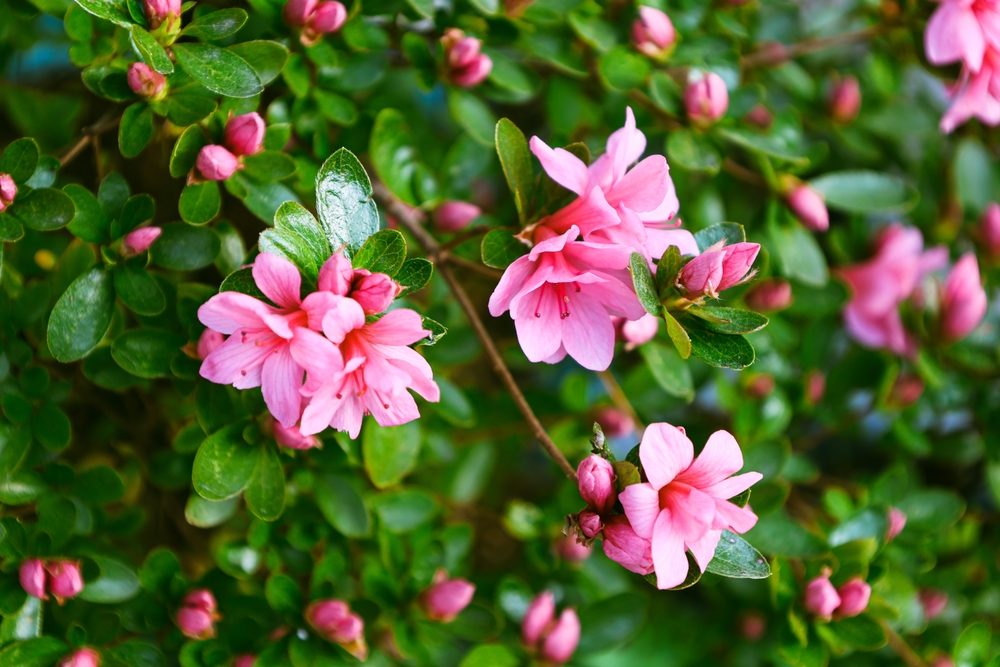Hydrangeas are highly valued for their colorful blooms. However, these flowering shrubs can make cats quite sick, especially if they nibble on any part of the plant. While some hydrangea varieties are definitely more toxic than others. Each one of them has the potential to poison cats.
All in all, they contain chemicals known as cyanogenic glycosides, which can be fairly toxic to cats and other animals (such as humans). When the plant is chewed or even ingested, the chemical is slowly released and can cause various symptoms, like vomiting, diarrhea, and lethargy.
Cyanogenic glycoside is a specific type of compound that can release cyanide when it comes in contact with some enzymes in the digestive system. Moreover, if the level of toxicity varies depending on the specific species of hydrangea or the amount ingested, it’s very important to note that the smallest amount of cyanide turns out to be dangerous to cats.
There are more than 75 types of hydrangeas, and they all contain toxins that can be quite harmful to cats, especially if ingested in larger quantities. But the type of hydrangea that’s the most toxic to cats is the Bigleaf hydrangea.
This particular plant has a substance that can cause vomiting, diarrhea, and lethargy in cats, especially if consumed in large quantities. The flowers of the Bigleaf hydrangea also have a higher concentration of this toxin, compared to the leaves or stems.
Even if some species of hydrangea are more toxic than others, any type of plant can be dangerous to cats if ingested in larger quantities. If you somehow suspect that your cat ate any part of a hydrangea or any other plant, you should seek veterinary attention right away.

Signs of hydrangea poisoning in cats
The signs of hydrangea poisoning in cats vary depending on the ingested amount, as well as the severity of the toxicity. Some of the most important signs include vomiting, diarrhea, loss of appetite, lethargy, weakness, depression, drooling, difficulty breathing, seizures, pale and blue gums, and a rapid heart rate.
If you somehow notice these or any other signs of illness, for that matter, or you suspect that your pet ingested a hydrangea plant, seek veterinary care right away.
What to do if your cat eats a hydrangea
If you spot a cat nibbling on a hydrangea plant, you should strive to remove them from the area right away, to prevent further ingestion. Call your veterinarian right away to let them know what happened.
They might advise you to bring your cat in for an examination, or they could give you instructions on what needs to be done next. Watch your cat closely for any sign of illness, like vomiting, diarrhea, and lethargy.
If you notice any abnormal symptoms, seek veterinary care as soon as possible. If possible, bring a sample of the plant with you to the vet’s office to help them identify the species of hydrangea and establish the best course of treatment.
Don’t try to induce vomiting, unless instructed to do so by your vet, since it can be very dangerous to perform this kind of procedure at home. There’s really no antidote to hydrangea poisoning, but the veterinarian could still recommend activated charcoal to help absorb any toxins, as well as other treatments for supportive care. Make sure you carefully follow the instructions to have the best outcome for your pet.
Are there any ways to prevent hydrangea poisoning in cats?
Even if hydrangeas can add a splash of color and charm to your garden or indoor space, it might just be a huge risk to keep them around if your cats are also residing in the same area. If you have hydrangea plants in your yard, make sure they are carefully placed in an area that’s inaccessible to your cat.
This could also involve placing them on high shelves or even keeping them behind closed doors. In fact, even better: consider using a series of alternative plants in your home or yard that are safe for cats. It’s worth noting that not only hydrangeas are toxic for cats.
You have to make sure you properly research other common houseplants and outdoor plants that can also be toxic for them. To efficiently protect your cat, consider taking them indoors. Train your cat to get used to a leash and harness in order to offer the safest outdoor experiences.
Other poisonous plants: autumn crocus
The autumn crocus, commonly known as saffron or naked lady, is quite a common ornamental flowering plant that generally blossoms in the fall. Even if it’s quite poisonous to dogs and horses, the plant is even more toxic to cats, due to its alkaloid colchicine (a natural compound that disrupts cell division) content. All parts of the plant are very toxic. Cats who ingest autumn crocus might have these symptoms:
- gastrointestinal signs, such as drooling, vomiting, and bloody diarrhea;
- breathing issues;
- seizures;
- kidney and liver damage;
- death.
Some of these symptoms can become evident right after ingestion, while others might take days to appear.

Azaleas
Azaleas are a specific species of flowering shrubs and small trees that are highly toxic to cats. There are over 1,000 species in this family of plants. Moreover, the degree of toxicity depends from moderate to severe, according to the Pet Poison Helpline.
The toxic component of all these plants is a specific type of neurotoxin known as grayanotoxin. Grayanotoxins disrupt sodium balance, negatively affecting the cat’s muscles, such as the heart. All parts of the plant are toxic, too, and ingesting the tiniest amount of the plant can result in a cat ending up poisoned.
Some of the most common symptoms of azalea and rhododendron poisoning can be: GI signs, such as drooling, vomiting, diarrhea, or an overall lack of appetite, heart arrhythmias, weakness, tremors, temporary blindness, seizures, coma, and death. If you have this kind of plant in your yard, don’t let your cat go too close to it. Also, avoid bringing flowers or plant clippings into the house.
Chrysanthemum
Chrysanthemums belong to a specific family of plants named Compositae. Also known as “mums”, these flowering plants include over 40 different species. The leaves and flowers of chrysanthemums have different compounds that turn out to be toxic to cats, such as:
- sesquiterpene: a specific terpene (naturally occurring compound that’s often responsible for plant scents) that can also cause a lot of toxicity and many allergic reactions in cats;
- lactones: metabolites (substances that are made or used during metabolism), causing further toxicity;
- pyrethrins: natural pesticides that deter insects but can also be toxic to cats (they are sometimes used to make flea and tick medication.
Cyclamen
Cyclamen, or the Persian violet and sowbread, has more than 20 species of perennial flowering plants. Most of them are kept indoors. The tubers and roots are the most toxic parts of the cyclamen. However, all parts of the plant have this toxic component, commonly known as saponins. Some of the most important signs of cyclamen toxicity include drooling, vomiting, and diarrhea.
Daffodils
Daffodils are flowering spring perennials. All parts of this plant have a poisonous agent known as lycorine, but the bulbs are the most toxic part. Lycorine causes drooling, vomiting, and diarrhea. In some instances, cats who eat daffodils and other plants from the same genre experience cardiac arrhythmia, low blood pressure, breathing difficulties, and convulsions.
If you found this article useful, we also recommend checking:













2 Responses